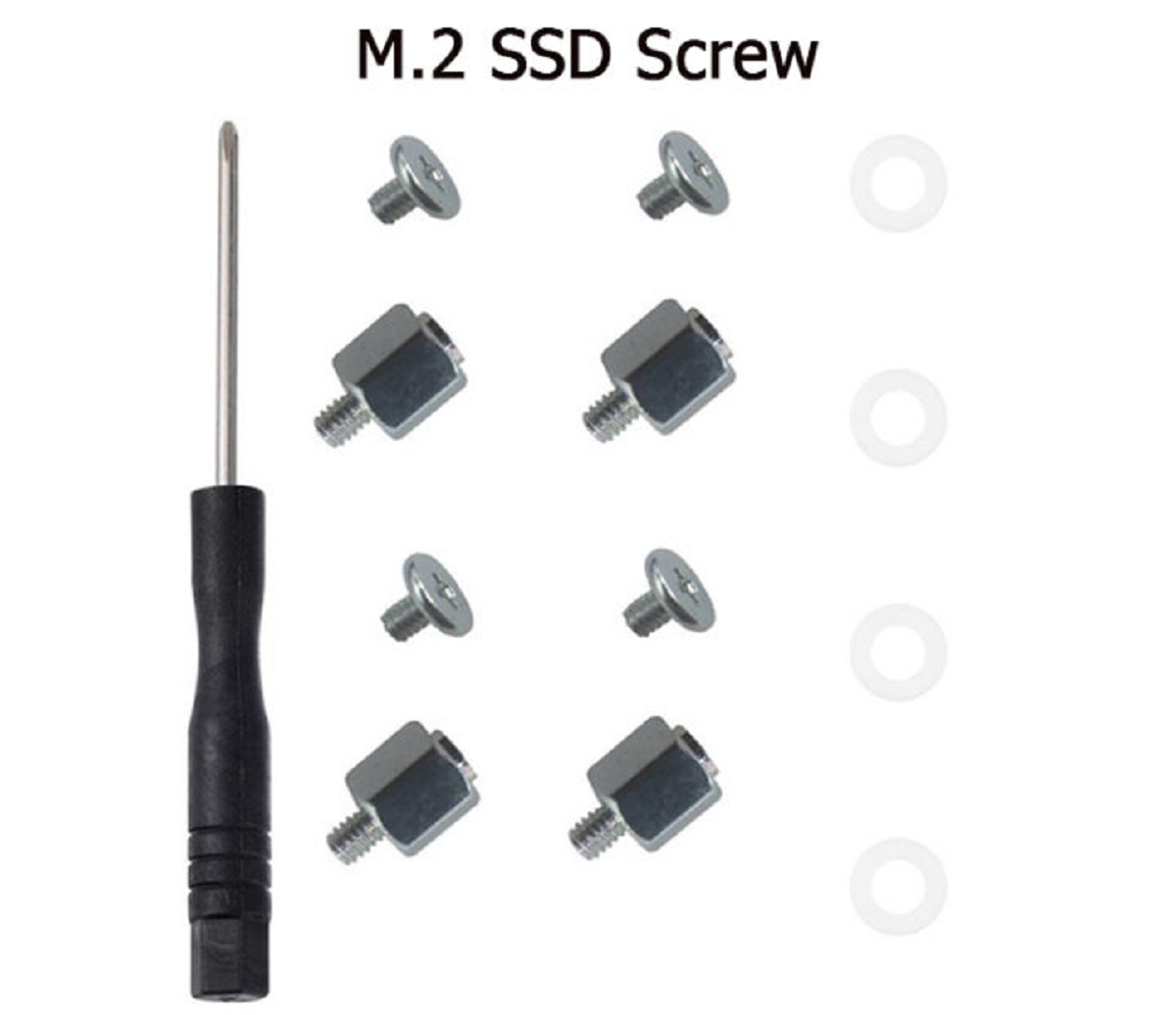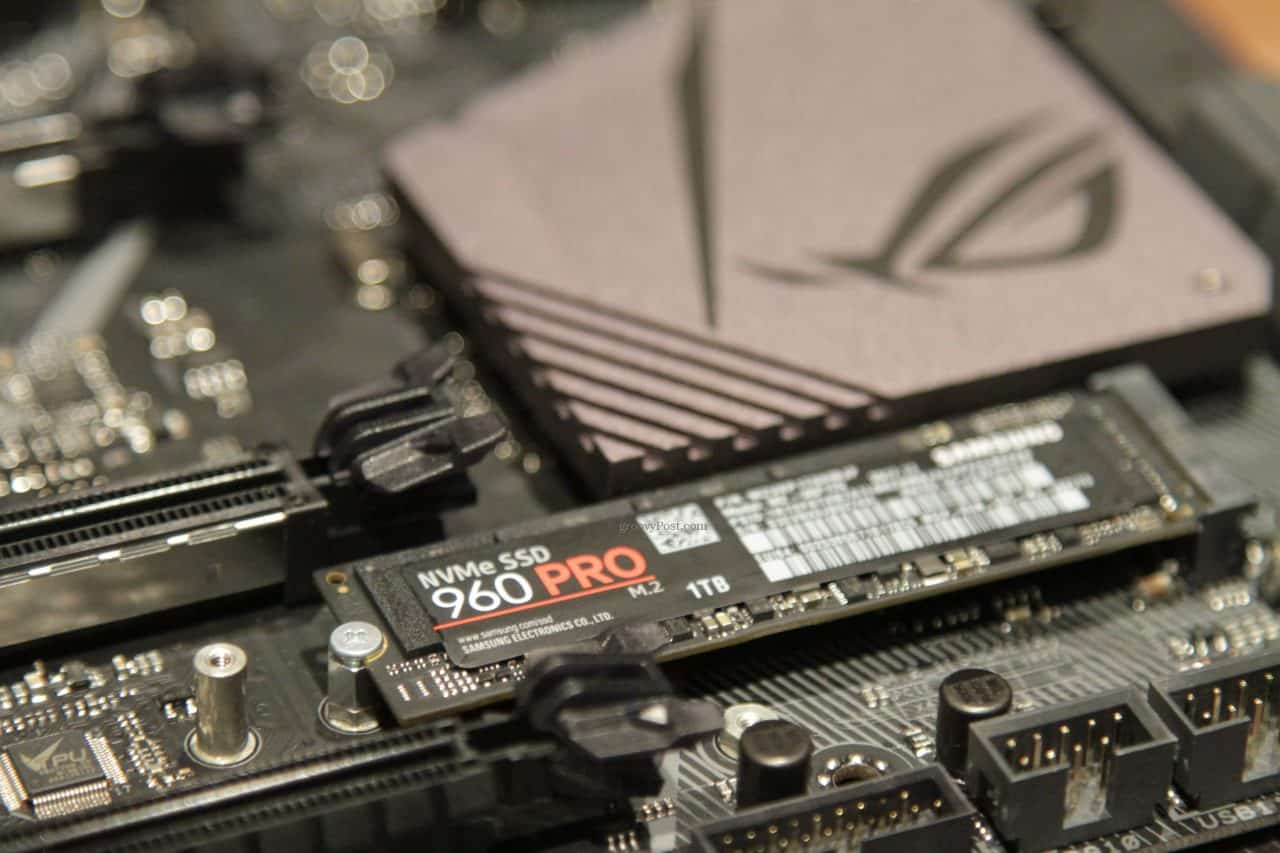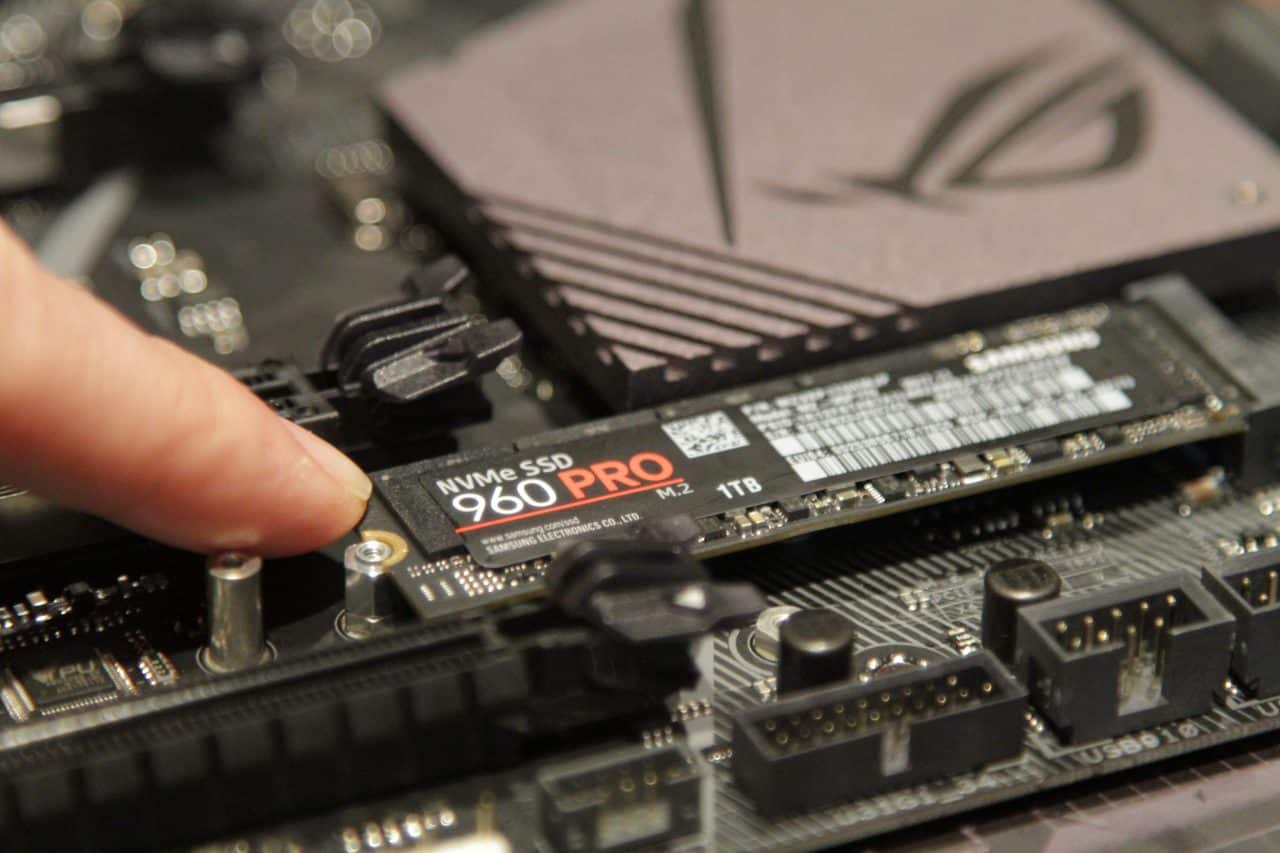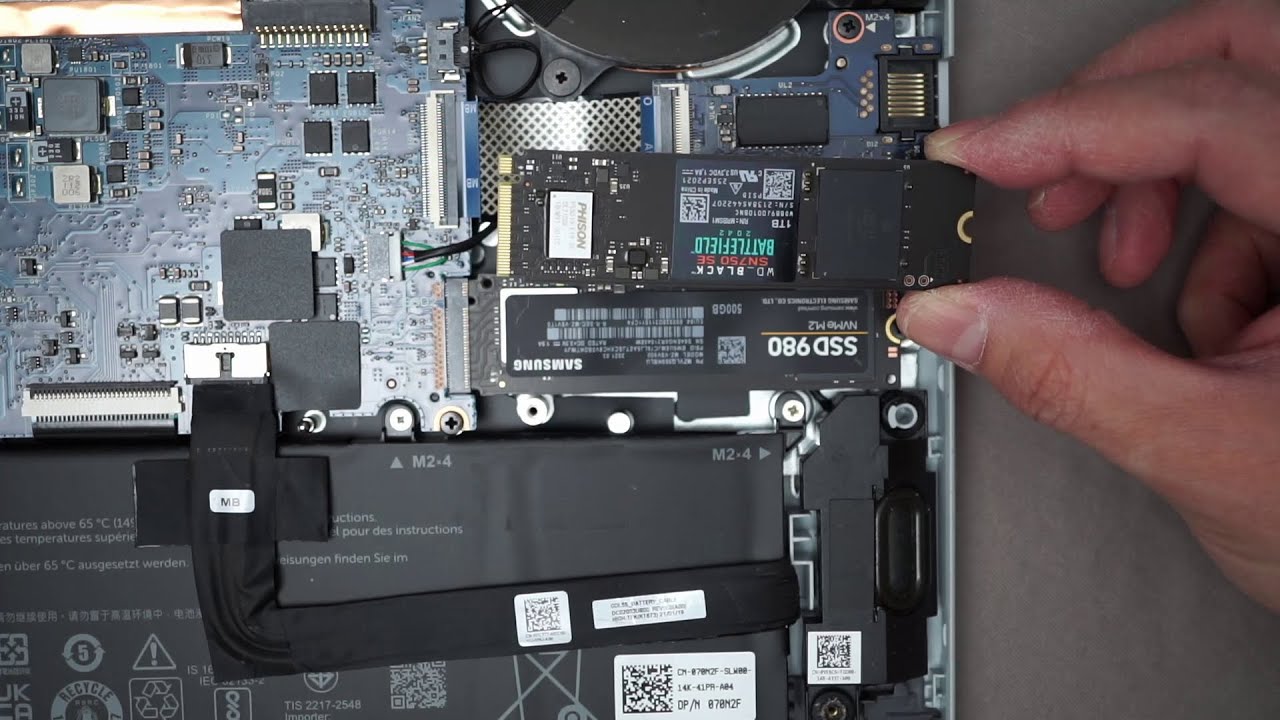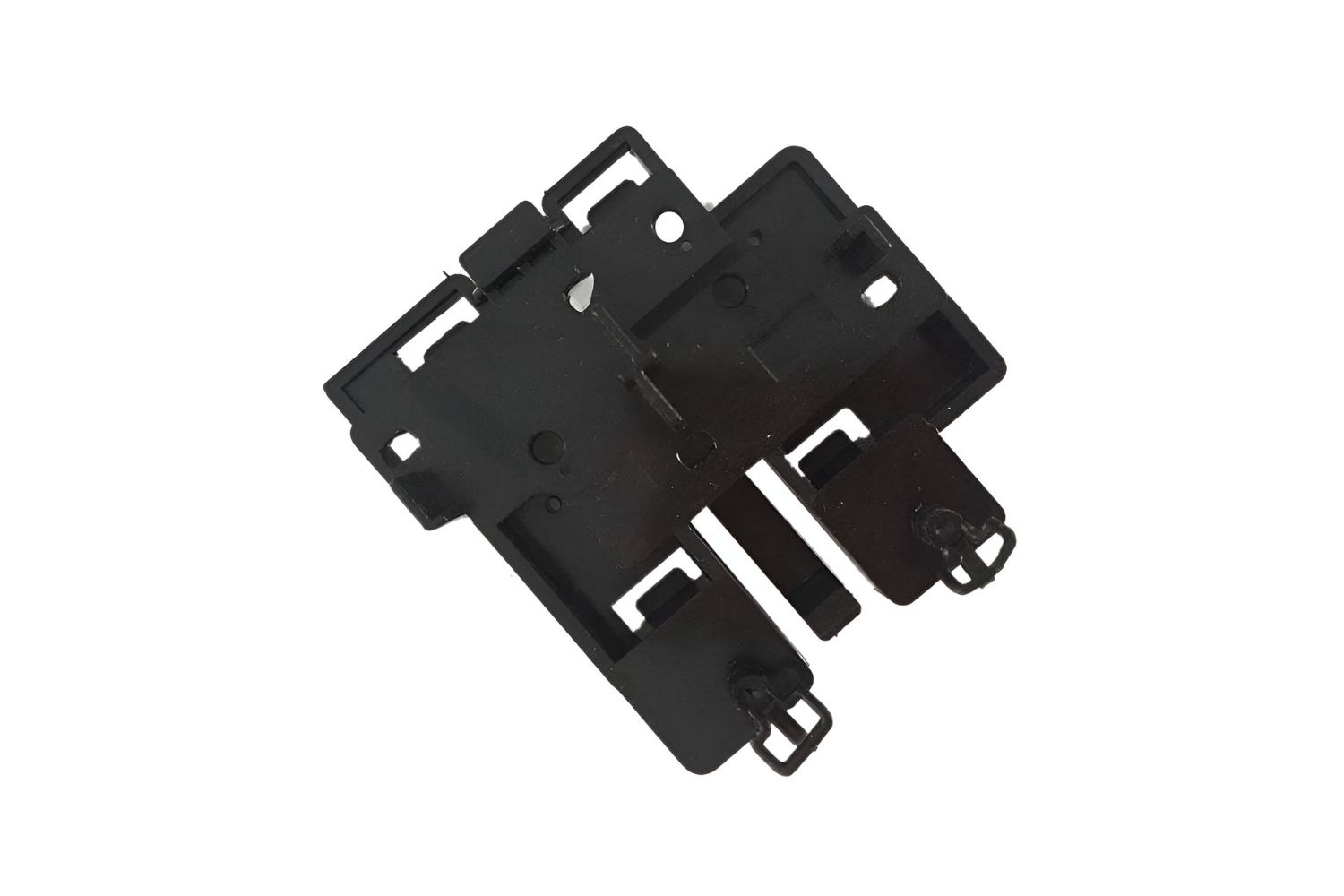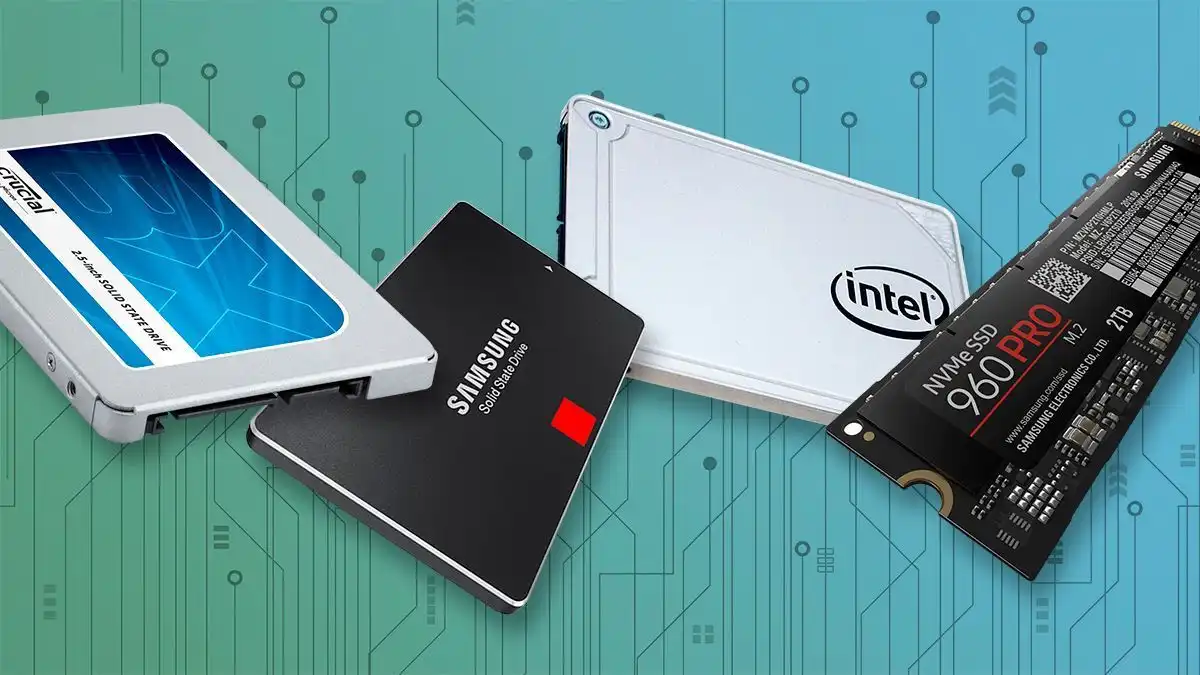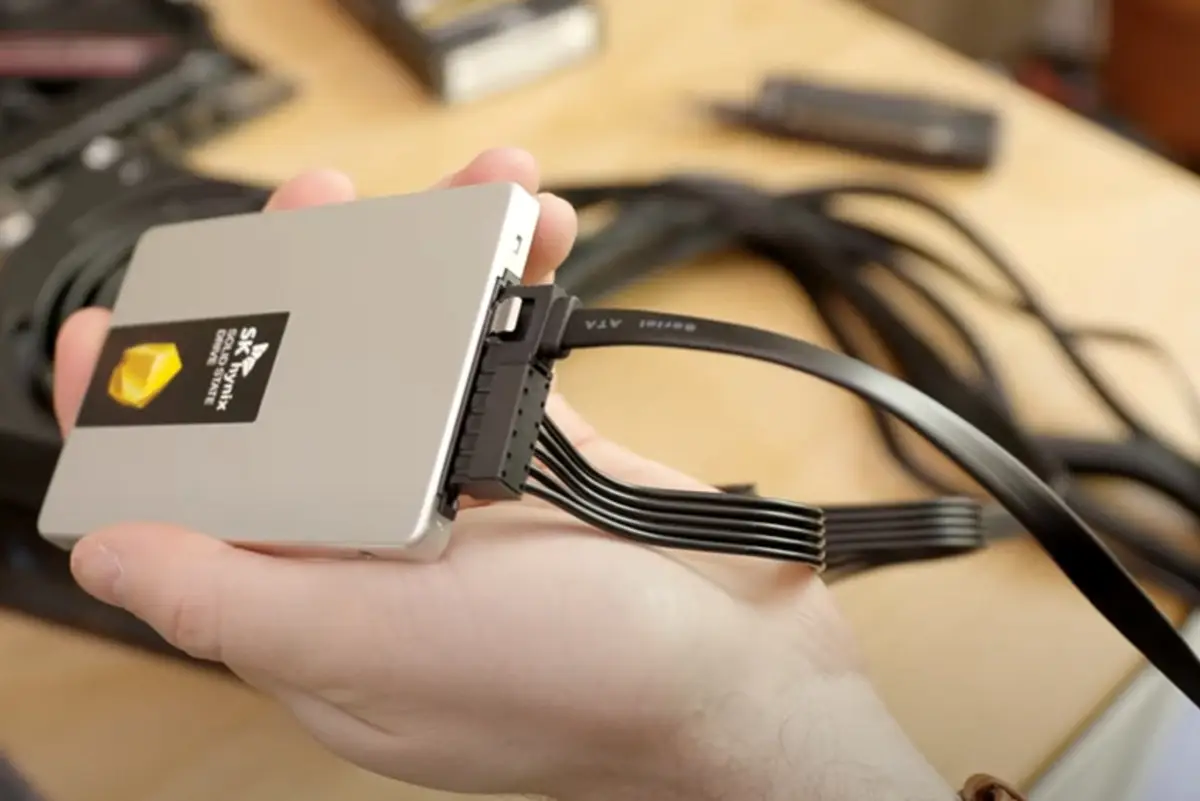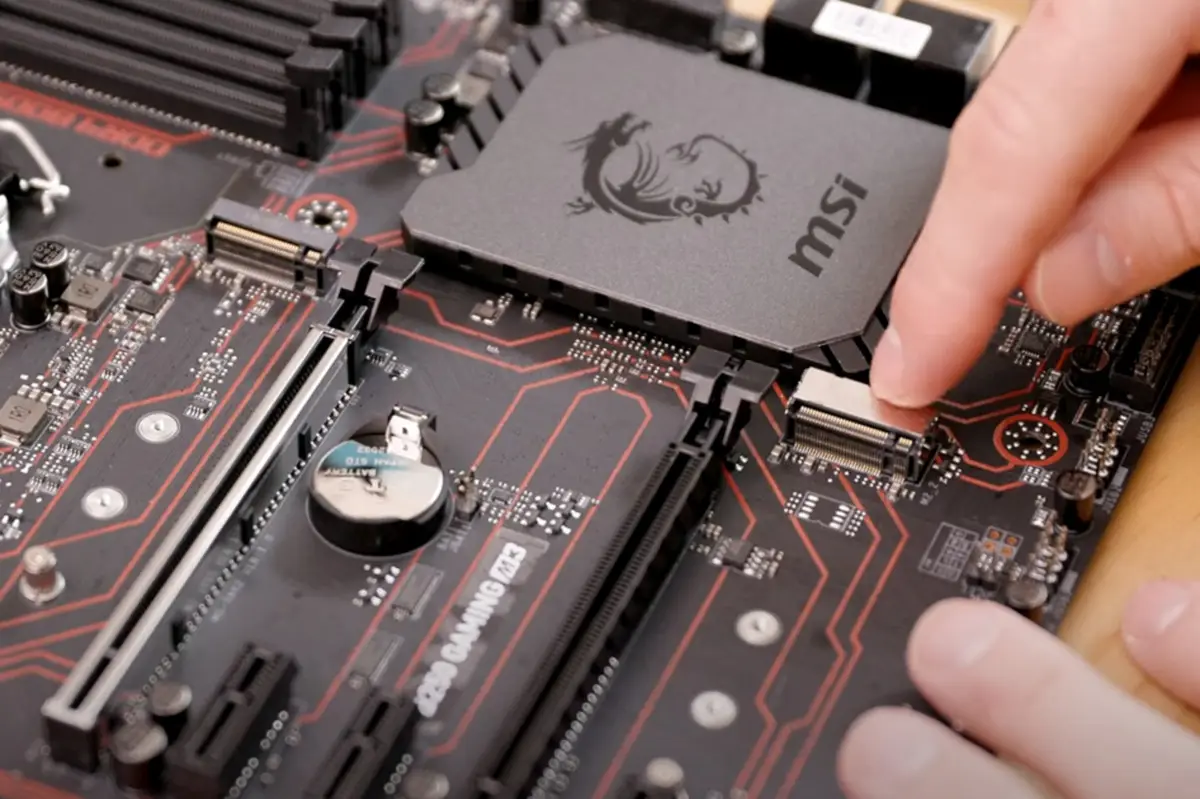Introduction
Welcome to the world of M.2 SSDs! If you’re in the process of upgrading or installing an M.2 SSD for the first time, you may have come across discussions about the importance of having the right screw for your M.2 SSD. While it may seem like a minor detail, choosing the correct screw is crucial for a successful installation. In this article, we will explore why you need the right screw for your M.2 SSD, the different types of screws available, how to determine the right one for your SSD, common problems you may encounter, and where to find and purchase compatible M.2 screws.
As technology continues to evolve, traditional hard disk drives (HDDs) are being replaced by more advanced and compact storage solutions such as solid-state drives (SSDs). M.2 SSDs, in particular, have gained popularity due to their compact form factor, high performance, and storage capacity. Unlike traditional SSDs that connect via SATA cables, M.2 SSDs are directly inserted into the motherboard using a dedicated M.2 slot.
While M.2 SSDs offer convenience and speed, they require a secure fastening mechanism to ensure stability and proper functioning. This is where the M.2 screw comes into play. These screws are specifically designed to securely hold the SSD in place, preventing it from dislodging and causing potential damage to the drive or the connectors.
Now, you might be wondering why you can’t just use any available screw. It’s important to understand that M.2 screws are not standardized across all manufacturers and motherboard models. This means that using an incorrect screw could result in improper installation, potentially damaging the SSD or the motherboard.
What is M.2 SSD?
M.2 SSD, also known as Next Generation Form Factor (NGFF) SSD, is a compact and high-performance storage device that has revolutionized the storage industry. M.2 SSDs are designed to replace traditional hard disk drives (HDDs) and provide a faster, more efficient, and space-saving solution for storing and accessing data.
Unlike HDDs, which rely on spinning magnetic disks and mechanical parts, M.2 SSDs utilize flash memory technology. This allows them to offer significantly faster read and write speeds, lower power consumption, and enhanced reliability. M.2 SSDs come in various capacities, ranging from 128GB to several terabytes, making them suitable for a wide range of applications, from personal computers to high-end servers.
One of the main advantages of M.2 SSDs is their form factor. The M.2 standard was introduced to address the limitations of traditional storage devices and provide a smaller, more versatile design. M.2 SSDs are slim and lightweight, with dimensions ranging from 22mm to 80mm in length and 16mm to 30mm in width. This compact size allows for easy installation in laptops, tablets, and other devices with limited space.
M.2 SSDs utilize the Peripheral Component Interconnect Express (PCIe) or Serial ATA (SATA) interface to connect to the computer’s motherboard. The PCIe interface offers higher data transfer speeds and is commonly found in high-performance M.2 SSDs, while the SATA interface is more prevalent in entry-level and mid-range models.
Another key feature of M.2 SSDs is their flexibility. They support different types of NAND flash memory, including Single-Level Cell (SLC), Multi-Level Cell (MLC), and Triple-Level Cell (TLC). Each type has its own characteristics in terms of performance, endurance, and price, allowing users to choose the most suitable option based on their specific requirements.
In summary, M.2 SSDs are revolutionary storage devices that offer superior performance, compact size, and versatility. Whether you’re a casual computer user or a professional in need of high-speed storage, M.2 SSDs provide the perfect solution to meet your needs.
Why you need the right screw for M.2 SSD?
Choosing the right screw for your M.2 SSD may seem like a minor detail, but it plays a crucial role in ensuring a successful installation and optimal performance of your SSD. Here’s why it’s important:
1. Compatibility: M.2 SSDs come in different lengths, widths, and mounting hole positions. The screw that secures the SSD to the motherboard is designed to match the specific dimensions and mounting holes of the drive. Using an incorrect screw could result in misalignment or improper fitting, potentially causing damage to the SSD or the motherboard connectors. Ensuring the right screw compatibility is essential for a secure and stable connection between the SSD and the motherboard.
2. Protecting the SSD: M.2 SSDs are delicate electronic components that need to be handled with care. The right screw provides the necessary support to keep the SSD in place and prevent any unnecessary movement or vibrations that might damage the internal components. A loose or improperly secured SSD can lead to data corruption, performance issues, or even complete drive failure.
3. Preventing electrical shorts: M.2 SSDs have exposed connectors on the underside that make direct contact with the motherboard. Using an incorrectly sized or incompatible screw can cause the screw to come into contact with the motherboard circuitry, resulting in a short circuit. This can potentially damage the SSD, the motherboard, or both, leading to costly repairs or replacements.
4. Warranty and support: Installing an M.2 SSD with the wrong screw or improper installation could void the warranty provided by the manufacturer. In case of any issues or failures, having the correct screw ensures that you can seek support or warranty claims without any complications.
By using the right screw for your M.2 SSD, you can ensure a secure, stable, and reliable connection between the SSD and the motherboard. This not only protects your investment but also allows you to fully benefit from the speed and performance advantages offered by an M.2 SSD.
Understanding different M.2 screw types
When it comes to M.2 SSDs, there are different types of screws available, each designed to match specific dimensions and mounting hole positions. Understanding the different screw types is important to ensure you select the correct one for your M.2 SSD installation. Here are the commonly used M.2 screw types:
- M2x3mm: This is the most commonly used M.2 screw type. It has a small head and a length of 3mm. It is mainly used for M.2 SSDs with a length of 60mm and above. The M2x3mm screw is compatible with most motherboards and provides a secure fit for the SSD.
- M2x2.5mm: This screw type is shorter in length, with a length of 2.5mm. It is typically used for M.2 SSDs that are 42mm or shorter. It is important to note that not all motherboards support the M2x2.5mm screw, so it’s crucial to check your motherboard’s specifications before using this screw type.
- M2.5: Unlike the M2 screws, which have a thread size of 2mm, the M2.5 screw has a slightly larger thread size of 2.5mm. This screw type is commonly used for larger M.2 SSDs or when a more secure fit is needed. Some motherboards come with M.2 slots that require an M2.5 screw instead of the standard M2 screw.
- Standoff: In addition to screws, M.2 SSD installations often require standoffs. Standoffs are small metal spacers that help elevate the SSD from the motherboard, providing proper clearance and preventing any damage to the components. Standoffs are typically included with the motherboard or SSD mounting kit.
Before selecting the screw type for your M.2 SSD, it’s essential to consult your motherboard’s manual or specifications. The manual will provide detailed information on the compatible screw types, lengths, and locations. Using an incorrect screw type or length can result in an unstable connection, improper fitting, or damage to the SSD or motherboard.
If you are unsure about the appropriate screw type for your M.2 SSD, you can contact the manufacturer’s support or consult with a qualified technician. They can guide you in selecting the correct screw type and ensure a successful and hassle-free installation.
How to determine the right screw for your M.2 SSD?
Choosing the right screw for your M.2 SSD is important for a secure and proper installation. To determine the correct screw type for your M.2 SSD, follow these steps:
- Check your motherboard manual: Start by consulting your motherboard’s manual or specifications. The manual will provide information on the compatible screw types, lengths, and locations for M.2 SSD installation. Look for a section specifically dedicated to M.2 SSDs or hardware installation.
- Measure the SSD length: Identify the length of your M.2 SSD. Typically, M.2 SSDs come in lengths of 42mm, 60mm, 80mm, or 110mm. Knowing the length of your SSD is crucial as it correlates with the appropriate screw size.
- Identify the mounting hole positions: Look for the mounting holes on your M.2 SSD. These holes are used to secure the SSD to the motherboard. Note the position and spacing of the mounting holes, as they vary depending on the SSD length.
- Match the screw type with the SSD: Based on the information gathered from your motherboard manual and the SSD’s length and mounting hole positions, identify the screw type that matches these specifications. The most common screw types are M2x3mm, M2x2.5mm, and M2.5.
- Ensure proper alignment: Before installing the screw, ensure that the SSD aligns correctly with the M.2 slot on the motherboard. The SSD should fit snugly without any misalignment or excessive force needed for insertion.
If you are still unsure about the appropriate screw type, you can reach out to the manufacturer’s support team or consult with a qualified technician. They can assist you in identifying the right screw type for your specific M.2 SSD and provide guidance throughout the installation process.
Remember, using the correct screw type is crucial to prevent damage to your M.2 SSD and motherboard, ensuring a secure connection and optimal performance of your SSD. Take the time to verify the specifications and compatibility before proceeding with the installation.
Common problems and how to fix them
While installing or working with M.2 SSDs, you may encounter some common problems. Here are a few issues that users often face and the steps to troubleshoot and resolve them:
- Misaligned screw: One of the common issues is incorrectly aligning or inserting the screw during installation. If the screw is not properly aligned with the mounting hole, it may not securely hold the M.2 SSD in place. To fix this problem, carefully remove the screw, realign it with the mounting hole, and tighten it to secure the SSD.
- Loose screw or SSD: Sometimes, the screw or the M.2 SSD may become loose due to vibrations or improper installation. Loose screws can cause the SSD to disconnect from the motherboard, leading to intermittent connection issues or complete failure. To fix this problem, make sure to tighten the screws properly and ensure a secure fit for the SSD in its slot.
- Incompatible screw type: Using an incorrect screw type can cause problems, such as misalignment or damage to the SSD and motherboard. If you have identified that the screw type is incompatible, carefully remove it and replace it with the appropriate screw type according to the SSD and motherboard specifications.
- Missing standoff: M.2 SSD installations often require standoffs, which provide proper clearance and prevent damage to the components. If you are missing a standoff or have forgotten to install it, make sure to obtain the necessary standoff and secure the SSD with it.
- BIOS or driver issues: In some cases, the M.2 SSD may not be recognized by the system due to BIOS or driver issues. Ensure that your motherboard’s BIOS is up to date and that the driver for your M.2 SSD is installed and functioning properly. You can check the manufacturer’s website for the latest BIOS updates and drivers specific to your motherboard.
If you continue to experience issues even after troubleshooting, it is advisable to consult with the manufacturer’s support or seek assistance from a qualified technician. They will be able to guide you through the problem-solving process and provide advanced solutions tailored to your specific situation.
By being aware of these common problems and their solutions, you can ensure a smooth M.2 SSD installation and maintain the optimal performance of your storage device.
Where to find and purchase M.2 screws?
If you are in need of M.2 screws for your SSD installation or replacement, there are several places where you can find and purchase them. Here are some options to consider:
- Online retail: Websites such as Amazon, Newegg, and other online retailers offer a wide variety of computer hardware and accessories, including M.2 screws. You can browse through their product listings and choose from different screw types and lengths. Make sure to read customer reviews and check the seller’s reputation before making a purchase.
- Computer hardware stores: Local computer hardware stores, both brick-and-mortar and online, often carry a selection of computer accessories and components. Visit a nearby store or check their online catalog to see if they have M.2 screws available. It’s a good idea to call ahead to confirm stock availability.
- Manufacturer’s website: The manufacturer of your M.2 SSD may typically supply replacement screws or provide information on where to purchase them. Visit their official website and look for support or accessories sections to find the appropriate screws for your specific SSD model.
- DIY repair shops: Local repair shops that specialize in computer repairs and upgrades may have M.2 screws available for purchase. They often maintain stock of commonly used accessories and can provide guidance on the right screw type for your SSD.
- Online forums and communities: Engaging with online forums and communities dedicated to computer hardware can be helpful in finding M.2 screws. Members may share their own experiences and suggest trusted sources for obtaining the screws you need.
When purchasing M.2 screws, ensure that they are compatible with your specific M.2 SSD and motherboard. Take note of the length, thread size, and head type to match the requirements of your installation. It is also a good practice to purchase spare screws to have on hand for future use or to replace any lost or damaged screws.
If you are unable to find the appropriate M.2 screws through any of these channels, consider reaching out to the manufacturer’s support for guidance on where to obtain the screws or alternatives that you can use for your installation.
By exploring these options, you can find trustworthy sources to purchase the correct M.2 screws and successfully complete your SSD installation or replacement.
Conclusion
Choosing the right screw for your M.2 SSD is a crucial step in ensuring a successful installation and optimal performance. By understanding the different screw types, determining the correct screw for your SSD, and addressing common installation problems, you can avoid compatibility issues, prevent damage to your components, and enjoy the full benefits of your M.2 SSD.
When embarking on an M.2 SSD installation or replacement, refer to your motherboard manual, measure the SSD length, and identify the mounting hole positions to select the appropriate screw type. Pay attention to proper alignment, tightening of screws, and the use of standoffs if required.
If you encounter any issues during the installation process, such as misaligned screws, loose SSDs, or missing standoffs, take the necessary steps to troubleshoot and fix the problems. Utilize resources like manufacturer support, online communities, and local computer hardware stores to assist you in finding the right solutions.
When searching for M.2 screws, consider online retail platforms, computer hardware stores, the manufacturer’s website, and engaging with DIY repair shops or online communities. Make sure to verify the compatibility of the screws with your specific M.2 SSD and motherboard before purchasing.
Remember, the proper selection and installation of an M.2 screw are essential for a secure, stable, and reliable connection between your M.2 SSD and motherboard. Taking the time to educate yourself and follow the recommended guidelines will ensure a hassle-free and successful installation experience.
With the right screw in place, you can enjoy the benefits of high-speed data transfer, improved performance, and efficient storage provided by your M.2 SSD.







